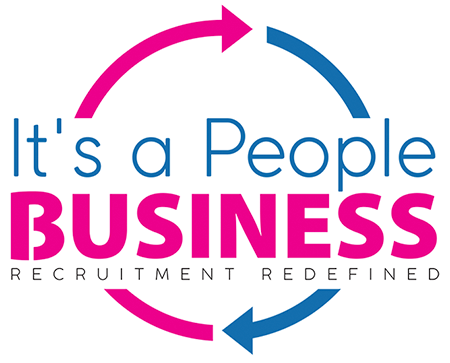
Staffing issues are a common challenge faced by organizations in the modern workplace. According to a survey conducted by the Society for Human Resource Management (SHRM), the top staffing challenges faced by organizations include attracting and retaining top talent, managing a diverse and dispersed workforce, finding the right balance between full-time and part-time employees, managing employee performance and productivity, and addressing skill gaps and training needs (SHRM, 2020). In this article, we will explore these staffing issues in more detail and provide strategies for addressing them based on research and best practices.
One of the most significant staffing issues in the modern workplace is the need to attract and retain top talent (SHRM, 2020). With unemployment rates at all-time lows and the job market highly competitive, organizations must find ways to stand out and offer competitive benefits and opportunities (Forbes, 2021). This includes offering competitive salaries, flexible work arrangements, and opportunities for professional development and advancement (SHRM, 2020). To attract and retain top talent, organizations should also focus on creating a positive company culture and offering a positive employee experience (Harvard Business Review, 2021).
Managing a diverse and dispersed workforce is another staffing issue that organizations may face (SHRM, 2020). With the proliferation of remote work and virtual teams, it is becoming increasingly common for organizations to have employees located in different parts of the world (Forbes, 2021). This can create communication and coordination challenges, as well as difficulties in managing and supporting employees who are not physically present in the office (SHRM, 2020). To address these staffing issues, organizations must invest in robust communication and collaboration tools and provide support for remote workers, such as access to training and resources (Forbes, 2021). They should also establish clear policies and guidelines for remote work, including expectations for availability and communication (SHRM, 2020).
How to address these issues?
To address these staffing issues, organizations must invest in robust communication and collaboration tools that allow employees to stay connected and collaborate effectively, regardless of their location. Additionally, organizations must provide support for remote workers, such as access to training and resources, to ensure that they have the necessary support to be successful in their roles. In order to effectively manage a diverse and dispersed workforce, organizations should also establish clear policies and guidelines for remote work, including expectations for availability and communication. This will help to ensure that remote workers understand what is expected of them and can stay on track with their work, even when they are not physically present in the office.
Finding the Right Balance
Finding the right balance between full-time and part-time employees is another staffing issue that organizations may face (SHRM, 2020). With the rise of the gig economy, more organizations are turning to part-time and temporary workers to meet their staffing needs (Forbes, 2021). While this can be a cost-effective solution, it can also create challenges in terms of training and onboarding, as well as in building a cohesive team culture (SHRM, 2020). To address these staffing issues, organizations should consider implementing strategies such as creating a clear onboarding process for part-time and temporary employees and providing opportunities for professional development and advancement (SHRM, 2020). They should also be mindful of the potential impact on company culture and take steps to ensure that all employees, regardless of their employment status, feel included and valued (Harvard Business Review, 2021).
With the rise of the gig economy, more organizations are turning to part-time and temporary workers to fill gaps in their staffing needs. While this can be a cost-effective solution, it can also create challenges in terms of training and onboarding, as well as in building a cohesive team culture. To address these staffing issues, organizations should consider implementing strategies such as creating a clear onboarding process for part-time and temporary employees and providing opportunities for professional development and advancement. This will help to ensure that all employees, regardless of their employment status, feel included and valued and are able to effectively contribute to the organization. Additionally, organizations should be mindful of the potential impact on company culture and take steps to ensure that all employees feel included and valued, regardless of their employment status. This can include providing opportunities for collaboration and communication, as well as creating a culture of inclusivity and respect.
Manage Performance
Managing employee performance and productivity is another staffing issue that organizations may face (SHRM, 2020). In today's fast-paced and highly competitive business environment, it is essential that organizations have processes in place to monitor and manage employee performance and productivity (Forbes, 2021). This includes setting clear expectations and goals, providing ongoing feedback and support, and holding employees accountable for their work (SHRM, 2020). To address these staffing issues, organizations should invest in tools and resources to support performance management, such as performance review software and employee development programs (Forbes, 2021). They should also establish clear lines of communication and encourage open and honest feedback between managers and employees (SHRM, 2020).
In today's fast-paced and highly competitive business environment, it is essential that organizations have processes in place to monitor and manage employee performance and productivity. This includes setting clear expectations and goals, providing ongoing feedback and support, and holding employees accountable for their work. To address these staffing issues, organizations should invest in tools and resources to support performance management, such as performance review software and employee development programs. These tools and resources can help to facilitate ongoing communication and feedback between managers and employees, as well as provide opportunities for professional development and growth. Additionally, organizations should establish clear lines of communication and encourage open and honest feedback between managers and employees. This will help to create a culture of transparency and trust, which can foster improved performance and productivity.
